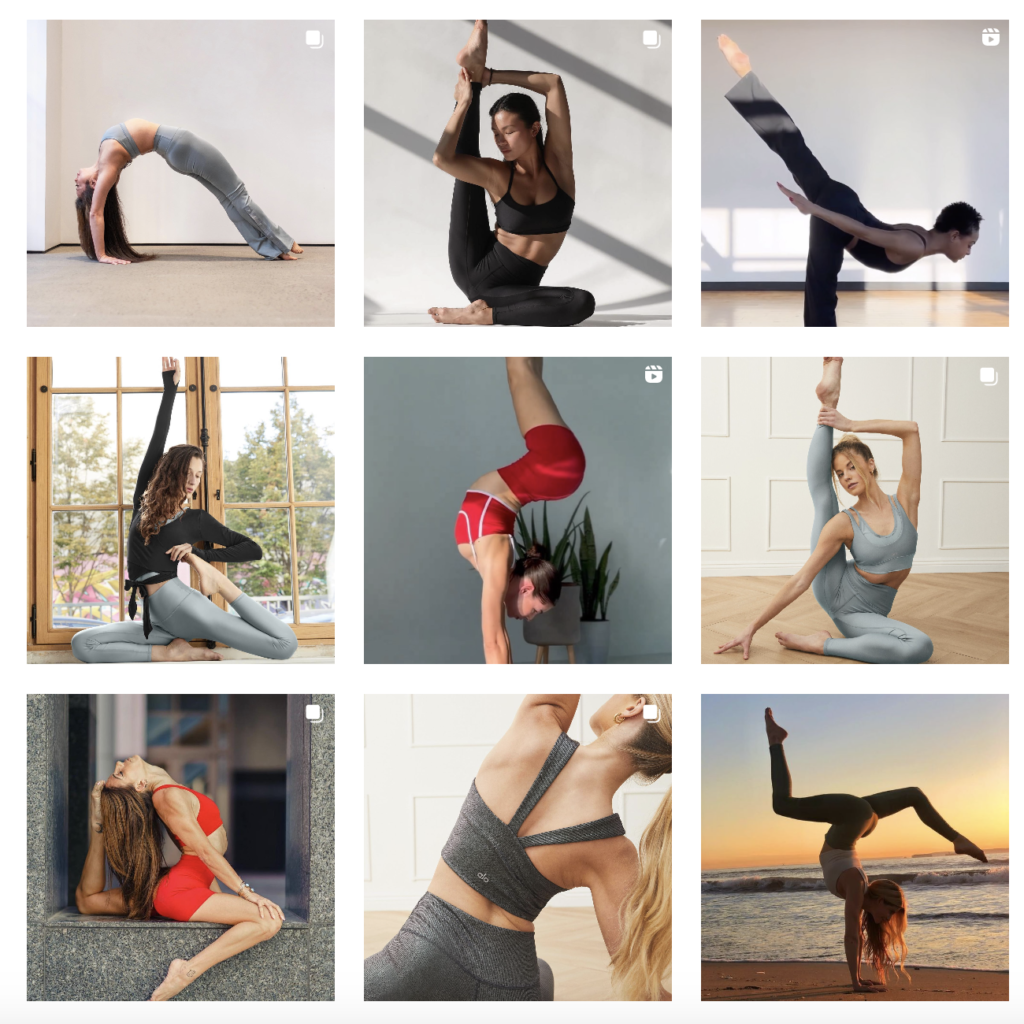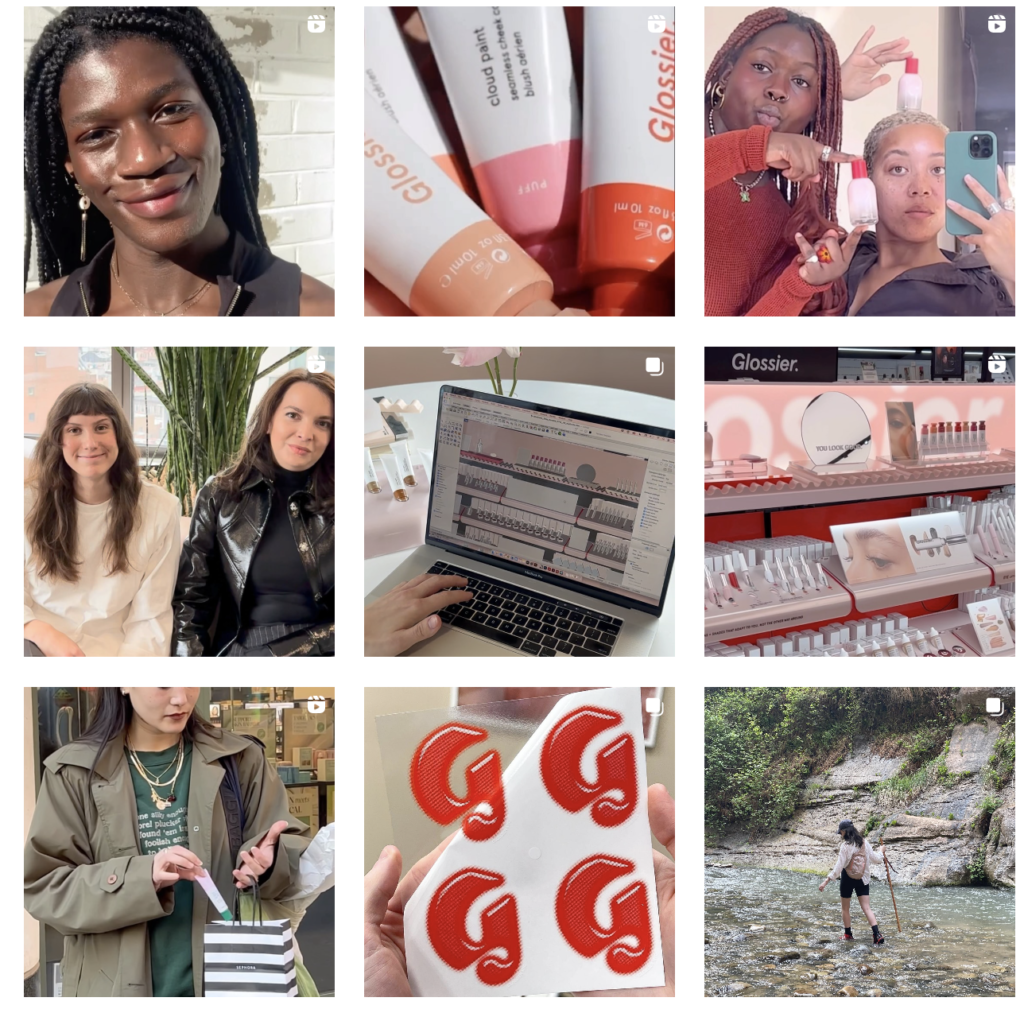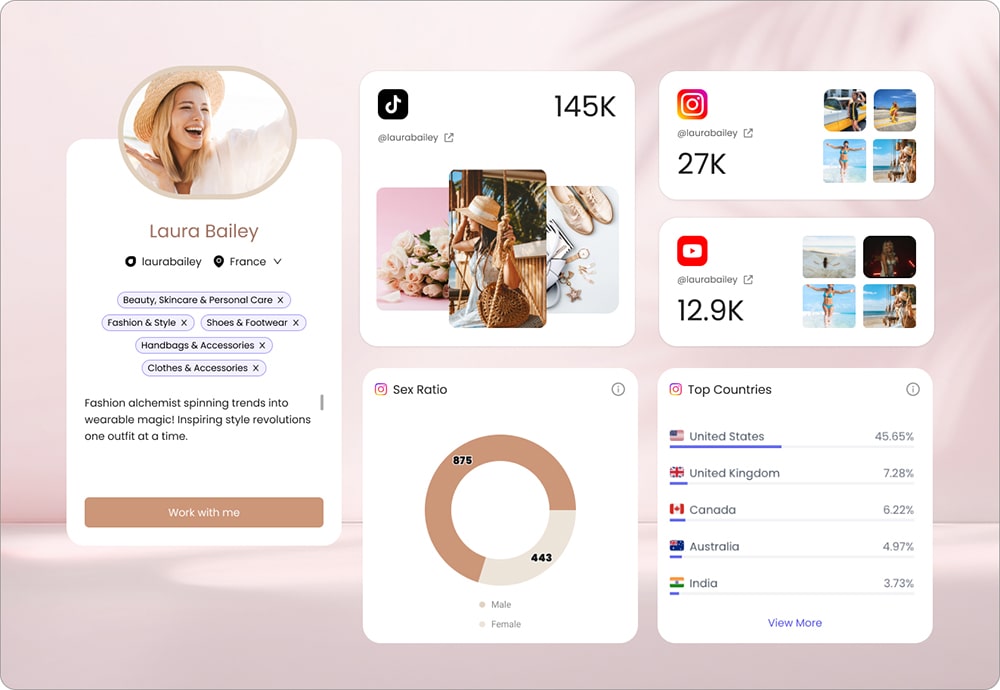If you’ve come across the term user-generated content (UGC) creator recently, you are not alone. UGC is a relatively recent trend, which has been rapidly transforming the social media world.
UGC creators are at the forefront of this trend, creating content that shares their unique perspectives, creativity, and experiences about brands and products. Brands, in their turn, have been quick to recognize this and started working with UGC creators to market their products and increase brand awareness. As a result, a new type of collaboration emerged between users and brands.
This article will take a look at what UGC creators are, how you can become one, and you can start getting paid for the content you craft.
What Is a UGC Creator?
A UGC creator is someone who creates user-generated content for brands. UGC stands exactly for that, user-generated content. These are the people who are passionate about a specific topic, a brand, or a product and don’t shy away from sharing their love through creating content and sharing it on their social platforms. The content can be in the form of photos, videos, reels, stories, blogs, or any other type of content, which the creators film and narrate based on their personal experience, which makes the content feel more authentic.
This authenticity was the main reason UGC has seen rapid growth during the last several years: people are looking for genuine experiences and opinions about brands, products, or services. And brands were quick to catch on to that and started to look for ways to cooperate with UGC creators to craft campaigns that look like you and your friend made them.
It’s important to note that although there are a number of similarities, UGC creators and influencers are not the same. Influencers usually have a significant following and work with brands to create and post promotional content. UGC creators, on the other hand, don’t need to have a large following. They create content mainly for their personal brand and for the products they genuinely enjoy. UGC creators are also not required to post that content.
4 Steps to Become a UGC Creator

Becoming a UGC creator doesn’t require thousands of followers, fancy video shooting equipment, and professional skills. In fact, all you need to start your journey as a UGC creator is a decent smartphone with a camera, and a love of sharing your experiences on your social platforms. And that’s the beauty of UGC – in its authenticity.
We’ve made a list of 4 steps you need to follow to become a UGC creator once you decide you want to give it a try.
Step 1: Find your niche
UGC content creation is quite similar to influencer marketing here: you need to have a niche. Decide on specific areas of interest or expertise that you want to concentrate on. Preferably it’s something that you enjoy so that you can do it over the long haul. Beauty, fashion, travel, cooking, and fitness are some of the most popular UGC content creation niches.
Step 2: Pick a platform
Next up is finding the right platform or platforms where you’ll be directing your efforts. Some of the popular platforms for UGC creators include Instagram, TikTok, YouTube, and Twitter. Keep in mind, however, that each of these platforms is designed for different types of content. Don’t spread yourself too thin by trying to go with every platform out there, but choose and stick with the content type you feel most comfortable with. For example, if you are into making photos, Instagram would be the right option, while for short-form videos you can go with both Instagram and TikTok.
Step 3: Create high-quality content
Don’t confuse high-quality content with professional content. You don’t have to have hyper-edited professional videos or photos, but you need to create content that’s engaging, informative, entertaining, and addresses all the possible pain points of the brand or product you are covering. This being said, if you can use professional equipment to enhance the quality of your content, absolutely go for it.
If you are being serious about UGC content creation, however, it’s important that you dedicate the time to improve your skill as time goes by. Basic video editing skills to create more engaging reels and videos are one place to start and can help you streamline the content creation process significantly.
Step 4: Engage with the audience
When you recommend brands or products on your social platforms, you are likely to get replies with feedback, comments, and questions. It’s important that you take the time to engage with them, replying to their questions and addressing their concerns.
These simple tips can help you greatly as you work towards becoming a UGC creator. Once you have the portfolio of content you’ve created about specific products, you can then start applying for UGC gigs.
How to Set Your Prices as a UGC Creator?

As with Influencer marketing, payments for UGC content creation can vary greatly. However, while there is no one-size-fits-all approach, there are a number of factors that you can consider when setting a price for your services.
-
- Your skills and experience – If you have a large portfolio and years of experience as a content creator, and are adept at creating high-quality yet authentic content, you can charge significantly more for your services.
-
- The type of content you create – Different content types take varying periods of time to craft. Long-form review video on YouTube is more likely to take more time to create and edit than a static image. As you try to set a price, consider how much time the creation process will take, including the pre-production and post-production processes.
-
- Audience size and engagement level – Here, it’s quite similar to how influencers work: you can charge more for a larger audience and higher engagement. This, however, is only the case when you decide to post the content yourself, which is not mandatory for the UGC creator.
-
- Market prices and demand – The market demand for UGC creators, as well as the average prices in the market for UGC creator services are important points to factor in. They can also serve as a starting point as you build you determine your pricing.
Once you have considered these factors, you can come up with a pricing strategy that works for you. If you are just starting out, it may be helpful to start with lower prices to build your portfolio, and then gradually increase your rates as your experience and skill grow. Eventually, you can take a look at our Instagram Money Calculator to learn how much you will earn on Instagram.
UGC Creator Rate Sheet
Once you’ve thought of your rates and set up pricing, you need to create a UGC creator rate sheet.
UGC creator rate sheet is a simple document that contains all the information about the services you provide, by content type, duration, platform, and any other relevant factor. The purpose of UGC creator rate sheets is to simplify the pricing communication with the brands you’ll be working with, as you’ll spend less time explaining your pricing, and the brands will get a clear idea of the costs of your collaboration from one place. UGC creator rate sheet is typically sent after the brand representative has shown interest in your services, and you’ve moved on to discussing more practical aspects of the collaboration.
Here are a few things you need to include in your Instagram rate sheet as you are building it:
-
- Your name and contact information, including social media handles.
-
- Overview of your services with a brief description of each.
-
- Rates for each of the services are clearly outlined, especially for the cases you charge a different rate for different services.
-
- Deliverables, indicating what the brand can expect as part of this or that service
-
- Payment terms, including when the payments are due, as well as the payment method
-
- Cancellation policy for the cases you or the brand may decide to withdraw from the collaboration.
It’s important to include all this information, as well as other information you find important, in your rate sheet, as well as communicate with the brand clearly about the costs and prices to avoid any potential miscommunication. Keep in mind also that you can be flexible about your rate sheet, and adjust and tweak it based on the industry changes, as well as depending on each case.
3 Tips For Getting Paid As a UGC Creator
Now, you are ready for the next step: getting paid for your UGC! Here are a few tried-and-tested ways to start earning through your UGC creator efforts.
Use platforms to find brand deals
With the rise of UGC content and influencers, new platforms emerged to facilitate their collaboration with brands. With platforms like ViralMango, you can post service offerings, indicating the terms and details of the collaborations you are looking for, for the relevant brands to find. You can also check the available listings brands looking for UGC creators have posted, and pitch your services to them.
Network with brand representatives and other creators
One of the main steps to making it as a UGC creator is to put yourself out there. One way to do so is through social media platforms. You can use your socials for personal branding, documenting your journey as a creator, and attracting interest in your work. Another way you can go with is through cold outreach, by directly reaching out to representatives of brands, as well as other creators in your niche.
Improve your pitch
As a UGC creator, you’ll need to pitch your services to the brands you reach out to quite often. Think of pitching as applying for a job: the better your pitch, the more chances you have to land the gig. So, you need to make your pitch stand out.
For this, first and foremost, you need to tailor your pitch for every opportunity you are applying to. Make it as customized as possible. In your portfolio, curate examples relevant to each case, showing each brand your experience in their particular niche. And remember to keep the pitch about the brand, not you. Show them what they’ll gain from your collaboration, and the value you’ll bring to their business.
Examples of Brand Partnerships With UGC Creators
Brands have been utilizing UGC content for some time now, often coming up with very inspiring and creative ways while doing so. Here are a few of our favorite examples of brand partnerships with UGC creators.
-
- AloYoga User-Generated Content

AloYoga is a brand of activewear for yogis and fitness enthusiasts. The content of their Instagram account largely consists of UGC, curated from a pool of 3.1 million followers, wearing the brand’s items, and appearing in yoga poses of varying difficulty. The brand always tags the yogis featured in the picture and adds an interesting fact about the picture into the caption. As a result, yogis get more exposure, while AloYoga accesses beautiful content.
-
- GoPro User-Generated Content

Similar to AloYoga, GoPro, the company manufacturing action cameras, has been making the best of user-generated content for a few years now. The Instagram feed of the brand is a mixture of UGC and content by GoPro itself, creating a beautiful medley of fascinating shots from all over the world.
The company inspires users to create and share content using hashtags like #GoPro #GoProCommunity #GoProAwards, as well as specific hashtags per country or region and encouraging participation, which has helped GoPro to grow its once small brand into what it is today.
-
- Glossier User-Generated Content

Glossier, a beauty and skincare brand, is another name that relies on UGC to get the word out about its products. The brand routinely posts brand-related pictures created by its customers, as well as heartwarming stories on how these people came to use and love Glossier.
When Glossier launched its Mega Greens Galaxy Masks, thousands of users shared pictures of themselves with the mask using the hashtag #MaskForce. Glossier reposted many of these posts, causing even greater engagement among the users.
FAQ

How many followers do I need to get paid as a UGC creator?
UGC creators don’t need to have a certain number of followers to get paid. UGC deals are typically only content-related, meaning you will get paid for creating the content, not for sharing it.
What is the difference between a UGC creator and an influencer?
Influencers are social media individuals who usually have large followings, work with brands in the frames of specific campaigns, and are paid for posting the content, as well as for its exposure. UGC creators do not necessarily have a large following, and they create content mainly for their own personal brand about the products they’ve tried and loved. UGC creators are also not required to post the content they’ve created, since they are paid not for sharing the piece of content, but for creating it. Check more about the differences here.
How can I sell my UGC content?
To start selling your UGC content, you need to first choose a niche you operate in, as well as pick a platform. After this, start creating and sharing content. Tag brands and use hashtags to increase exposure. Be up-to-date on the developments of your niche, and participate in relevant challenges and competitions, to attract attention to your content. As you build a portfolio and make it visible, brands can start reaching out to you, and you can start reaching out to them for cooperation.
How do I find brands to work with?
You can find brands to work with through designated platforms like ViralMango which facilitate brand deals. There, you can offer your services, as well as search through brand announcements of UGC creator positions. Alternatively, you can reach out to brands and pitch yourself directly in case they are working with UGC creators.
How do I create a UGC portfolio/media kit?
To create a UGC portfolio/media kit, you need to start by curating the content you want to showcase. Select the best pieces of content you’ve created, and make sure that they are of high quality. Next, organize your portfolio/media kit in such a way that it is easy to navigate and that viewers can easily find what they are looking for. Lastly, make sure to add context to the visuals by including a brief description of what the content is about. Depending on your needs and preferences, you can use Google Slides or online tools like Canva to craft your portfolio.
Reviewed By Rem Darbinyan
Revolutionizing industries with AI, Rem Darbinyan is the CEO of ViralMango and an entrepreneur, AI expert, and influencer marketing strategist.




